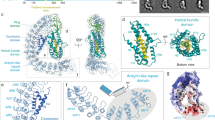Abstract
The major component of black widow spider venom, α-latrotoxin, triggers massive exocytosis in a variety of neurosecretory cells. An important trigger for exocytosis is the calcium influx via α-latrotoxin-induced channels in biological membranes. However, this mechanism fails to explain exocytosis which occurred in the complete absence of extracellular calcium. Recently, sophisticated biochemical and molecular techniques have led to the discovery of novel α-latrotoxin-binding membrane receptors: neurexins and latrophilin/CIRL (calcium-independent receptor for α-latrotoxin). Neurexins are single transmembrane proteins which bind to α-latrotoxin in a calcium-dependent manner and also interact with the synaptic vesicle protein, synaptotagmin. On the other hand, latrophilin is a seven-transmembrane protein and belongs to the family of G-protein-coupled receptors. The multitude of effects of α-latrotoxin on exocytosis in different cell systems and the nature of its membrane targets are discussed in this article. The molecular details of how α-latrotoxin binding is transduced eventually to exocytosis remain to be elucidated.
Similar content being viewed by others
Author information
Authors and Affiliations
Additional information
Received: 23 October 1998 / Accepted: 26 November 1998
Rights and permissions
About this article
Cite this article
Henkel, A., Sankaranarayanan, S. Mechanisms of α-latrotoxin action. Cell Tissue Res 296, 229–233 (1999). https://doi.org/10.1007/s004410051284
Issue Date:
DOI: https://doi.org/10.1007/s004410051284




